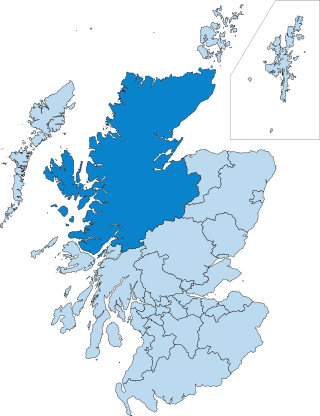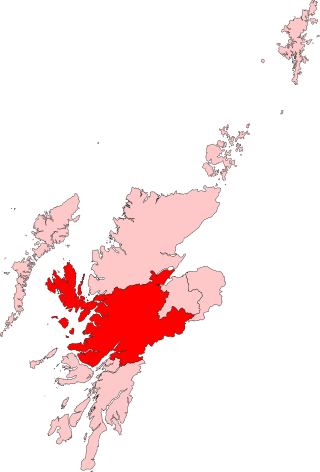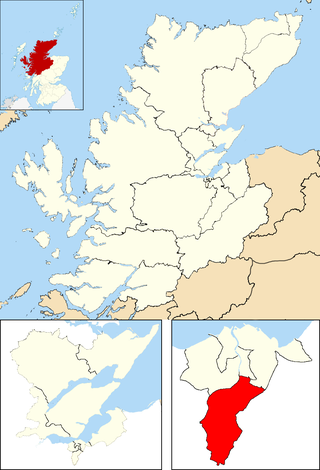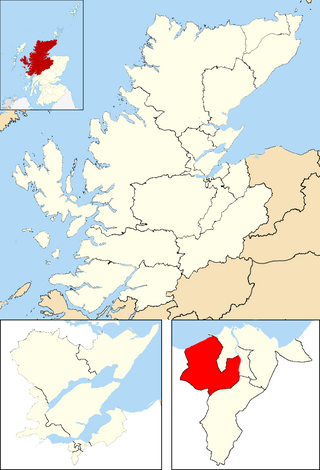Aird and Loch Ness is one of the 21 wards used to elect members of the Highland Council. It includes Loch Ness, the town of Beauly, and the village of Fort Augustus. It elects four Councillors.
Aird and Loch Ness is one of the 21 wards used to elect members of the Highland Council. It includes Loch Ness, the town of Beauly, and the village of Fort Augustus. It elects four Councillors.
| Election | Councillors | |||||||
|---|---|---|---|---|---|---|---|---|
| 2007 | Margaret Davidson (Ind.) | Helen Carmichael (Ind.) | Drew Hendry (SNP) | Hamish Wood (Liberal Democrats) | ||||
| 2012 | ||||||||
| Oct 2015 | Jean Davis (Liberal Democrats) | |||||||
| 2017 | Emma Knox (SNP) | George Cruickshank (Conservative) | ||||||
| Mar 2021 | David Fraser (Ind.) | |||||||
| 2022 | Helen Crawford (Conservative) | Chris Ballance (Green) | ||||||
| Party | Candidate | FPv% | Count | |||||||
|---|---|---|---|---|---|---|---|---|---|---|
| 1 | 2 | 3 | 4 | 5 | 6 | 7 | ||||
| SNP | Emma Knox (incumbent) | 26.2 | 1,364 | |||||||
| Independent | David Fraser (incumbent) | 22.7 | 1,182 | |||||||
| Conservative | Helen Crawford | 21.1 | 1,099 | |||||||
| Scottish Green | Chris Ballance | 10.2 | 528 | 706 | 727 | 730 | 783 | 924 | 1,165 | |
| Independent | Aarron Duncan-MacLeod | 8.3 | 430 | 471 | 535 | 556 | 596 | 774 | ||
| Liberal Democrats | Holly Kingham | 6.6 | 342 | 369 | 385 | 398 | 523 | |||
| Labour | Michael Perera | 4.9 | 253 | 276 | 286 | 291 | ||||
| Electorate: 10,213 Valid: 5,198 Spoilt: 57 Quota: 1,040 Turnout: 51.5% | ||||||||||
A by-election was originally scheduled to take place on 5 November 2020 to elect one councillor after the death of George Cruickshank. However, it was postponed to 11 March 2021. [4]
| Party | Candidate | FPv% | Count | ||||||
|---|---|---|---|---|---|---|---|---|---|
| 1 | 2 | 3 | 4 | 5 | 6 | ||||
| Independent | David Fraser | 28.3% | 997 | 1010 | 1076 | 1194 | 1663 | 2109 | |
| SNP | Gordon Shanks | 28.2% | 994 | 1010 | 1129 | 1198 | 1211 | ||
| Conservative | Gavin Berkenheger | 23.4% | 824 | 835 | 847 | 929 | |||
| Liberal Democrats | Martin Robertson | 8.5% | 300 | 335 | 397 | ||||
| Scottish Green | Ryan MacKintosh | 7.7% | 272 | 297 | |||||
| Labour | Bill Moore | 3.8% | 133 | ||||||
| Electorate: 10,147 Valid: 3,520 Spoilt: 44 Quota: 1,761 Turnout: 3,564 (35.1%) | |||||||||
| Party | Candidate | FPv% | Count | ||||||
|---|---|---|---|---|---|---|---|---|---|
| 1 | 2 | 3 | 4 | 5 | 6 | ||||
| Independent | Margaret Davidson (incumbent) | 27.8% | 1,405 | ||||||
| Conservative | George Cruickshank | 19.7% | 998 | 1,045.3 | |||||
| SNP | Emma Knox | 14.2% | 719 | 734.1 | 734.3 | 842.07 | 1,270.6 | ||
| Independent | Helen Carmichael (incumbent) | 12.4% | 625 | 837.02 | 848.6 | 947.6 | 960.7 | 1,049.4 | |
| Liberal Democrats | Dr. Jean Davis (incumbent) | 10.2% | 515 | 558.6 | 568.1 | 654.5 | 671.2 | 714.9 | |
| SNP | Matt Friess | 8.08% | 409 | 424.9 | 425.3 | 491.8 | |||
| Scottish Green | Chris Ballance | 7.7% | 388 | 411.8 | 413.5 | ||||
| Electorate: between 9,735 and 9,752 Valid: 5,059 Spoilt: 66 Quota: 1,012 Turnout: 5,125 (52.6%) | |||||||||
A by-election was triggered by the resignation of Drew Hendry in July 2015, following his election as an MP. [7]
| Party | Candidate | FPv% | Count | ||||
|---|---|---|---|---|---|---|---|
| 1 | 2 | 3 | 4 | ||||
| Liberal Democrats | Jean Mary Elizabeth Davis | 33.5% | 1,029 | 1,099 | 1,208 | 1,511 | |
| SNP | Emma Ann Knox | 32.5% | 1,000 | 1,097 | 1,144 | 1,167 | |
| Conservative | George Cruickshank | 15.2% | 467 | 480 | 544 | ||
| Independent | Zofia Fraser | 9.5% | 293 | 330 | |||
| Scottish Green | Vikki Tania Trelfer | 9.3% | 287 | ||||
| Electorate: 9,584 Valid: 3,076 Spoilt: 24 Quota: 1,538 Turnout: 3,100 (32.35%) | |||||||
| Party | Candidate | FPv% | Count | ||||||||
|---|---|---|---|---|---|---|---|---|---|---|---|
| 1 | 2 | 3 | 4 | 5 | 6 | 7 | 8 | ||||
| Independent | Margaret Davidson (incumbent) | 36.94% | 1,194 | ||||||||
| SNP | Drew Hendry (incumbent) | 20.77% | 840 | ||||||||
| Independent | Helen Carmichael (incumbent) | 16.3% | 659 | 894.4 | |||||||
| Liberal Democrats | Hamish Wood (incumbent) | 12.31% | 498 | 546 | 575.4 | 579 | 585.9 | 652.4 | 768 | 858.1 | |
| SNP | Robert Stewart | 7.1% | 287 | 314.1 | 322.7 | 345.3 | 358.5 | 387 | 413.2 | ||
| Conservative | George Cruickshank | 6.89% | 279 | 297.4 | 307.4 | 307.9 | 335.8 | 351.9 | |||
| Labour | Mike Robb | 5.46% | 221 | 234.2 | 242.1 | 243.3 | 246.2 | ||||
| UKIP | Fred Pidcock | 1.63% | 66 | 72.1 | 75.8 | 76.3 | |||||
| Electorate: 8,999 Valid: 4,044 Spoilt: 56 Quota: 809 Turnout: 4,100 (45.56%) | |||||||||||
| Party | Candidate | 1st Pref | % | Seat | Count | |
|---|---|---|---|---|---|---|
| Independent | Margaret Davidson | 1,215 | 24.6 | 1 | 1 | |
| Independent | Helen Carmichael | 1,125 | 22.8 | 2 | 1 | |
| SNP | Drew Hendry | 892 | 18.1 | 3 | 5 | |
| Liberal Democrats | Hamish Wood | 550 | 11.1 | 4 | 8 | |
| Conservative | Margaret Chown | 355 | 7.2 | |||
| Independent | John Martin | 322 | 6.5 | |||
| Labour | Andrew MacKintosh | 292 | 5.9 | |||
| Independent | Alexander Nicol | 192 | 3.9 | |||

Local government in Scotland comprises thirty-two local authorities, commonly referred to as councils. Each council provides public services, including education, social care, waste management, libraries and planning. Councils receive the majority of their funding from the Scottish Government, but operate independently and are accountable to their local electorates. Councils raise additional income via the Council Tax, a locally variable domestic property tax, and Business rates, a non-domestic property tax.

Chris Ballance is a Scottish playwright and politician. He is a member of the Scottish Green Party and has been a councillor for the Aird and Loch Ness wards in the Highland Council since 2022. He was also a Member of the Scottish Parliament (MSP) for the South of Scotland region from 2003 to 2007.

Caithness, Sutherland and Easter Ross is a constituency of the House of Commons of the Parliament of the United Kingdom (Westminster). It is the most northerly constituency on the British mainland. It elects one Member of Parliament (MP) by the first-past-the-post system of election.

The politics of the Highland council area in Scotland are evident in the deliberations and decisions of the Highland Council, in elections to the council, and in elections to the House of Commons of the Parliament of the United Kingdom (Westminster) and the Scottish Parliament (Holyrood). In the European Parliament the area was within the Scotland constituency, which covers all of the 32 council areas of Scotland.

Skye, Lochaber and Badenoch is a constituency of the Scottish Parliament (Holyrood) covering part of the Highland council area. It elects one Member of the Scottish Parliament (MSP) by the first past the post method of election. It is also one of eight constituencies in the Highlands and Islands electoral region, which elects seven additional members, as well as eight constituency MSPs, to produce a form of proportional representation for the region as a whole.

The 2012 Highland Council election took place on 3 May 2012 to elect members of Highland Council. The election used the twenty-two wards created as a result of the Local Governance (Scotland) Act 2004, with each ward electing three or four Councillors using the single transferable vote system and 80 Councillors being elected.

Andrew Egan Henderson Hendry, known as Drew Hendry, is a Scottish National Party (SNP) politician who served as Member of Parliament (MP) for Inverness, Nairn, Badenoch and Strathspey from 2015 until 2024, when the seat was abolished. Hendry served as the SNP's Economy Spokesperson in the House of Commons from September 2023 to May 2024.
The 2017 Highland Council election was held on 4 May 2017 to elect members of the Highland Council. The election used the 21 wards created under the Local Governance (Scotland) Act 2004; each ward elected three or four councillors using the single transferable vote system. A total of 74 councillors were elected, six less than in 2012.

Peterhead North and Rattray is one of the nineteen wards used to elect members of the Aberdeenshire Council. It elects four Councillors.

An Taobh Siar agus Nis is one of the 11 wards of Comhairle nan Eilean Siar. Created in 2007, the ward elects three councillors using the single transferable vote electoral system. Originally a four-member ward, the number of members elected in An Taobh Siar agus Nis was reduced following a boundary review and it has elected three councillors since the 2022 Comhairle nan Eilean Siar election.

Cromarty Firth is one of the 21 wards used to elect members of the Highland Council. It consists of North of the Cromarty Firth, west of the Tain and Easter Ross ward

Culloden and Ardersier is one of the 21 wards used to elect members of the Highland Council. It includes the villages of Culloden, Ardersier and Smithton. It elects three Councillors.

Inverness Ness-side is one of the 21 wards used to elect members of the Highland Council. It includes Drummond, Hilton and Lochardil areas of Inverness, and a more rural area, east of the River Ness. It elects three Councillors.

Inverness South is one of the 21 wards used to elect members of the Highland Council. It includes Cradlehall, Inshes and Westhill areas in or near urban Inverness, and the village of Tomatin, on the River Findhorn. It elects four Councillors.

Inverness West is one of the 21 wards used to elect members of the Highland Council. It includes Kinmylies and Scorguie areas of urban Inverness, and a more rural area, west of the River Ness. It elects three Councillors.

Badenoch and Strathspey is one of the 21 wards used to elect members of the Highland Council. It encompasses the towns and villages of Aviemore, Boat of Garten, Carrbridge, Cromdale, Dulnain Bridge, Grantown-on-Spey, Kingussie, Newtonmore and Nethy Bridge. It elects four Councillors.

Eilean a' Cheò is one of the twenty-one wards used to elect members of the Highland Council. It includes the islands of Skye and Raasay. It elects four Councillors.

Wester Ross, Strathpeffer and Lochalsh is one of the twenty-one wards used to elect members of the Highland Council. It includes the towns and villages of Gairloch, Lochalsh, Strathpeffer and Ullapool. It elects four Councillors.
Thurso and North West Caithness is one of the 21 wards used to elect members of the Highland Council. This was a new ward in the 2017 election following boundary changes. It elects four Councillors.
Elections to The Highland Council were held on 5 May 2022, the same day as the 31 other Scottish local government elections. As with other Scottish council elections, it was held using single transferable vote (STV) – a form of proportional representation – in which multiple candidates are elected in each ward and voters rank candidates in order of preference.